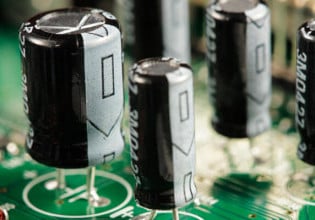NRL Begins Testing Solar Power Satellite In Orbit
A team of researchers at the United States Naval Research Laboratory (NRL) have conducted their first solar power satellite experiment
A team of researchers at the United States Naval Research Laboratory (NRL) have conducted their first solar power satellite experiment. From this study, the NRL hopes to harness power from direct sunlight in order to provide clean, consistent, and globally transmissible energy.
This 12-inch Photovoltaic Radio-Frequency Antenna Module (PRAM) was designed for converting sunlight into Microwave Power Transmission (MPT). Image used courtesy of the U.S. Naval Research Laboratory, NRL.
Solar energy has been used for powering satellites since the beginning of the space age. However, there had not been a study that focused on a system’s thermal performance during energy conversions.
From Space Solar To Microwave Power
NRL engineers launched a photovoltaic radio frequency antenna module (PRAM) aboard an Air Force X-37B Orbital Test Vehicle in order to harvest solar energy and convert it into usable power. They are hoping the PRAM device will absorb and harvest solar energy to then convert into microwave power transmission (MPT).
The PRAM hardware would be providing temperature data along with overall system efficiency during energy production. One challenging task the NRL researchers face involves the temperature of the hardware electronics. During the experiment, the device will be in direct sunlight which will prevent electrical components from maintaining their desired operating temperatures. The good thing for us, the NRL has conducted several flight experiments like these to test hardware in space conditions.
In a previous study, NRL researchers were able to demonstrate power beaming was possible through solar panels. They were able to harness the sun’s energy and convert it back to usable power aboard the International Space Station (ISS). They created a light-emitting rectifying antenna (LEctenna) that successfully converted a wireless network signal into electric power. This unique device proved that it is possible to take frequencies, direct to different locations, and provide enough energy to power a separate device. The only difference from the previous study to the current one is having to send microwave frequencies over large distances.
There is an immense power supply from solar radiation and it can be harnessed through solar cells in orbit but not on Earth. The solar radiation gets lost as it travels past our atmosphere, essentially losing energy as it makes its way to ground level. Solar-powered satellites are able to be in abundant, unimpeded sunlight while in orbit. Once the solar energy is collected, the PRAM hardware will attempt to transmit converted microwave frequencies to Earth.
PRAM is fully capable of being the leading sunlight-to-microwave converter. MPT is the wireless transfer of amounts of power at microwave frequencies from one location to another. NRL Researchers are driven to find ways of utilizing solar energy to remotely power unmanned aerial vehicles (UAVs). If successful, power harvesting can have UAV’s flight time extended without the need for heavy batteries to provide sufficient power.
NRL’s PRAM Principal Investigator, Paul Jaffe, discussed the significance of their first attempt at solar harvesting for microwave transmission while in orbit. “For solar-powered satellites, the idea would be to provide energy anywhere in the world. The test could play a revolutionary role in our energy future.”
A Groundbreaking Orbital Experiment
Based on the study, the team of NRL engineers aimed to build a fully-functional system on a dedicated spacecraft to test the transmission of energy back to Earth. This development could potentially help provide energy to remote installations like forwarding operating bases and disaster response areas.
NRL’s PRAM based hardware could become a major power source for devices in future space exploration missions. MPT would be a clean power source for a variety of military and civilian applications. This harvested power could potentially provide enough energy to power large energy-consuming facilities such as semiconductor fabrication labs. One day, harvested solar energy in space could potentially beam down to Earth to power devices.
What other possibilities do you see forthcoming from NRL’s study? Let us know in the comments below.






